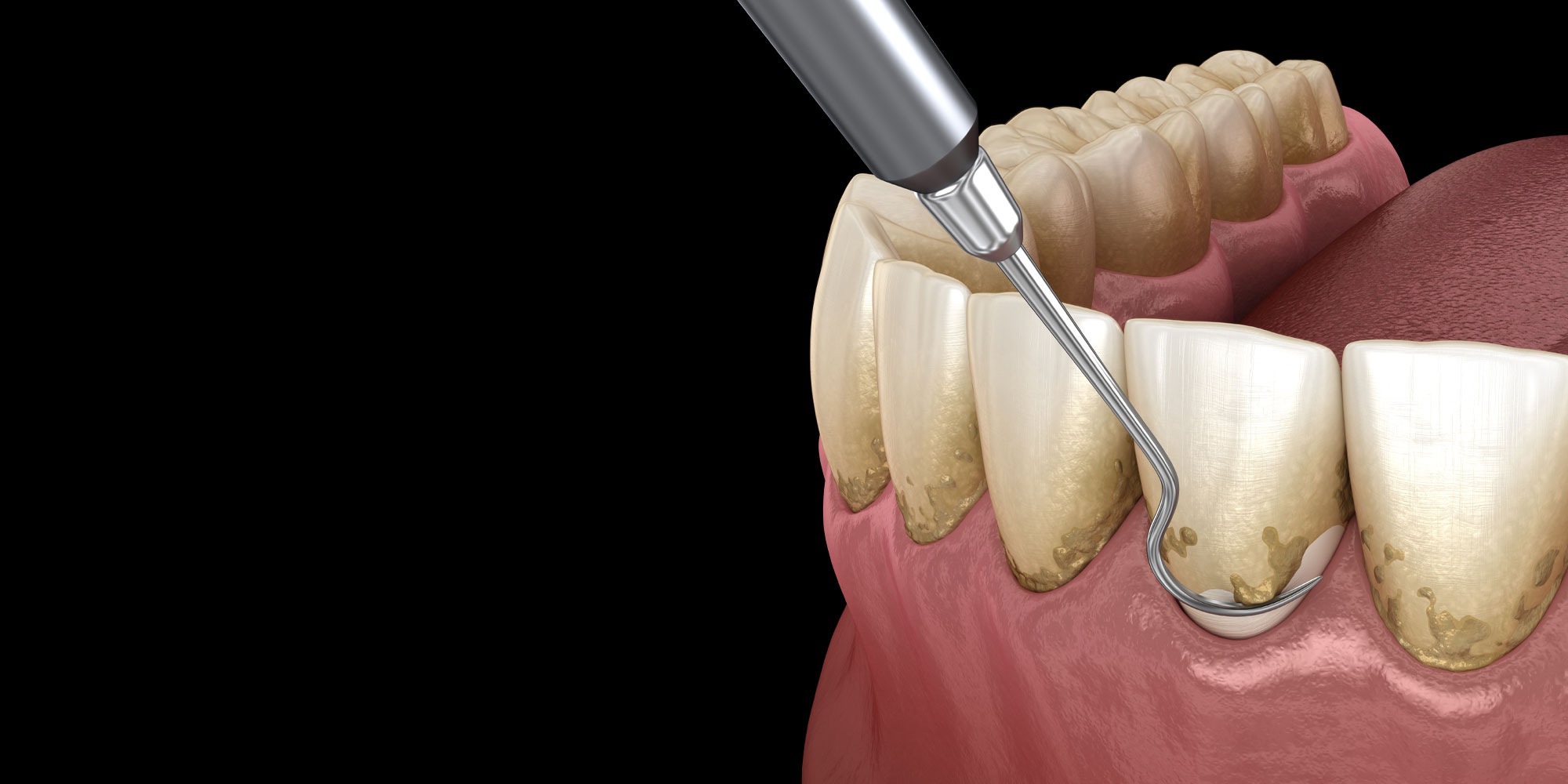
Scaling & Root Planing
When plaque is not removed properly, it attracts bacteria and turns into difficult to remove calculus, or tartar. The bacteria spreads to the gums and causes them to pull away from the tooth, creating periodontal pockets. When the periodontal disease is left untreated, it can spread to the bone and cause tooth loss. Scaling and root planing can be effective in the early stage of gum disease, called gingivitis. Many patients who have gingivitis or more advanced stages of periodontal disease often experience bleeding and sore gums when brushing, flossing and eating.

Effectively Treating Gum Disease
The general steps of the scaling and root planing treatment may include a local anesthetic to numb the root of your tooth being treatment. Your doctor may suggest a form of sedation, if necessary. The treatment may require an ultrasonic tool to remove the calculus. Your doctor or dental hygienist will use the instruments below the gum line to clean the root of your tooth. The goal of this deep cleaning process is to clear away the tartar and smooth the surface of the tooth to encourage the gum to reattach to the tooth.
It is necessary for scaling and root planing treatment patients to maintain their oral health and cleanliness after the procedure. Home maintenance is a major part of the healing process—the areas cleaned need to be free of food and debris in order to keep the bacteria from entering the periodontal pockets. Extra brushing and flossing may be required to ensure the area is clean at all times.
It is also important to discontinue use of tobacco products. This will promote healing and reduce risk of infection. It is best for patients to be in a healthy condition and not have recently had a major surgery before receiving a scaling and root planing treatment. Your doctor will ask you about your medical history and discuss sedation options. After your treatment, your doctor may recommend an antiseptic oral rinse containing chlorhexidine to rid your mouth of bacteria and reduce risk of infection. In some cases, it may be necessary for your doctor to prescribe antibiotics after your scaling and root planing procedure.
The scaling and root planing treatment is most effective in the early stages of gum disease and can reduce periodontal pocket depth up to two or three millimeters.


